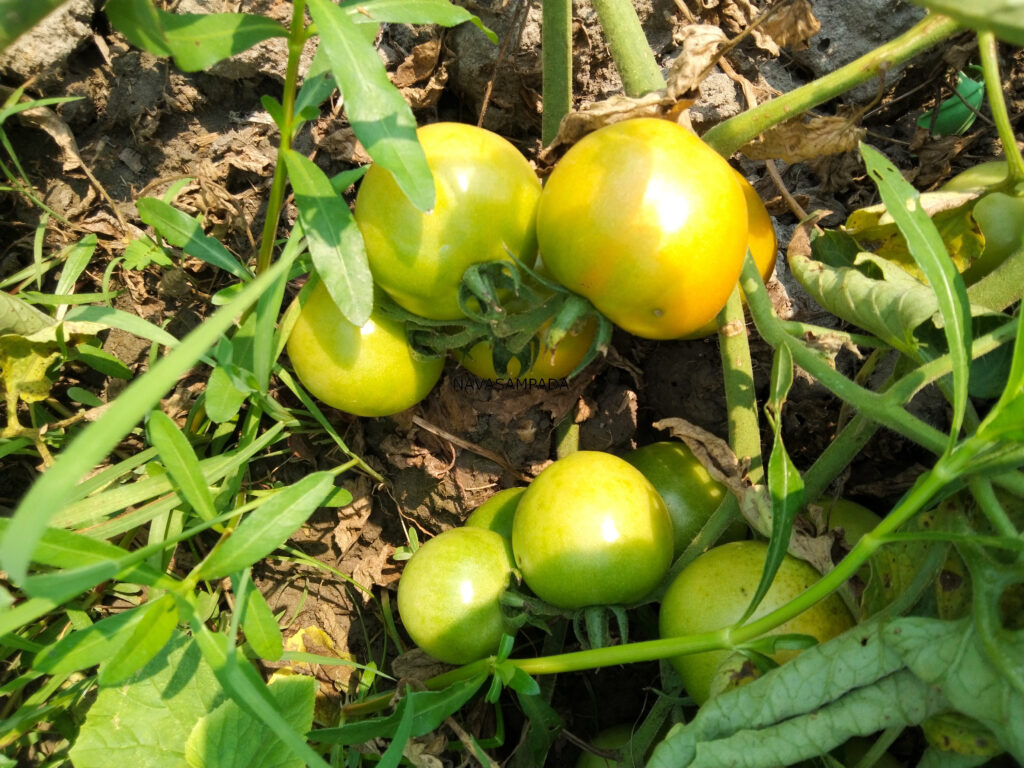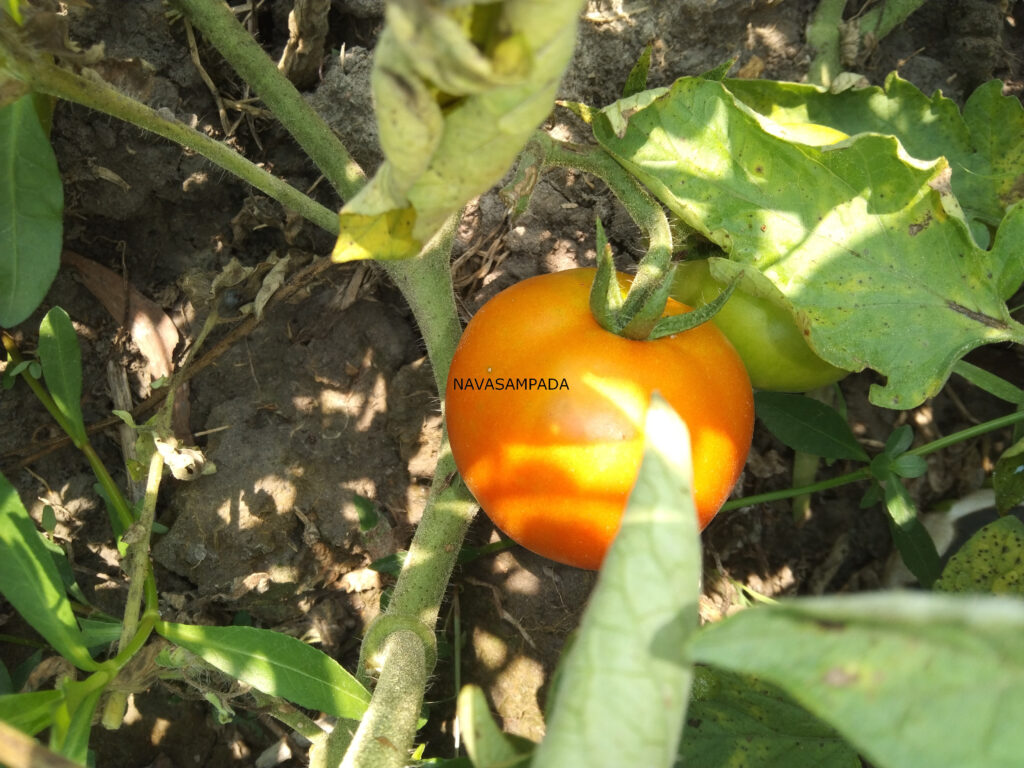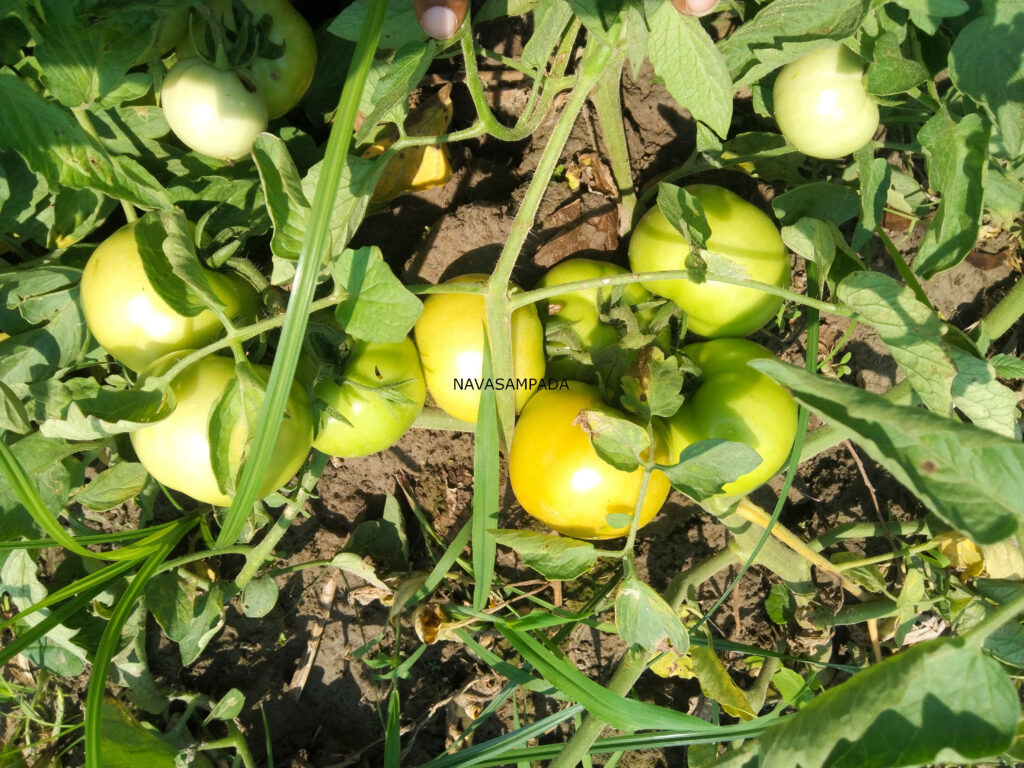Choose the Right Tomato Variety
The first step in growing tomatoes is selecting the best variety for your climate, soil, and intended use.
There are two main types:
Determinate tomatoes: These grow to a fixed size and produce fruit all at once. They’re great for canning or processing.
Indeterminate tomatoes: These continue growing and producing fruit throughout the season, making them ideal for fresh eating.
Other factors to consider include:
Hybrid vs. Heirloom: Hybrids are typically more disease resistant and yield higher, while heirlooms offer unique flavors and can be saved for replanting.
( Heirloom-: denoting a traditional variety of plant or breed of animal which is not associated with large-scale commercial agriculture. )



Prepare the Soil
Tomatoes thrive in well drained, fertile soil. Select a spot with 68 hours of direct sunlight each day. The soil should be slightly acidic with a pH between 6.0–6.8. To ensure optimal growth:
Test the soil and amend it as needed with compost or well rotted manure to improve fertility.
Mix in a balanced fertilizer (e.g., 101010 NPK ratio) based on soil test recommendations.
Start Seeds Indoors (Optional)
If you’re starting from seeds, sow them indoors about 6–8 weeks before your area’s last expected frost date.
Use seed trays or small pots filled with a seed starting mix.
Plant seeds 1/4 inch deep and keep them in a warm, sunny location (7080°F or 2127°C).
Once seedlings emerge, provide plenty of light to prevent leggy growth (grow lights can help).
When the plants are strong enough and outdoor temperatures are consistently above 50°F (10°C), harden them off by gradually exposing them to outdoor conditions for 7–10 days before transplanting.
Transplanting Outdoors
Once the threat of frost has passed and the soil has warmed to about 60°F (16°C), transplant your seedlings. Space them according to their variety:
Determinate types: 18–24 inches apart.
Indeterminate types: 24–36 inches apart.
Plant them slightly deeper than they were in their pots to encourage stronger root development, burying part of the stem if necessary.
Watering and Mulching
Tomatoes need consistent moisture, but their roots should never sit in waterlogged soil. Here’s how to ensure your plants stay hydrated:
Water deeply and consistently, aiming for 1–1.5 inches per week.
Use drip irrigation or soaker hoses to keep moisture off the foliage, which can help prevent diseases like blight.
Apply 23 inches of organic mulch (such as straw or shredded leaves) around the base of the plants to retain moisture, regulate temperature, and suppress weeds.
Fertilization
Tomatoes are heavy feeders, so regular fertilization is important.
At planting: Mix in a slow release balanced fertilizer or compost into the soil.
During growth: Once the plants start flowering, side-dress with a nitrogen-rich fertilizer. When the fruit begins to set, switch to one higher in phosphorus and potassium to encourage fruit development.
Supporting Plants and Pruning
As tomatoes grow, they’ll need support to stay upright and healthy. You can use stakes, cages, or trellises to keep plants off the ground and improve air circulation, reducing disease risk. Here’s how to maintain strong plants:
Prune suckers: These side shoots grow in the leaf axils. Removing them helps focus the plant’s energy on fruit production.
Trim lower leaves: Prune any leaves touching the ground to minimize disease spread.
Pruning indeterminate types: Prune more regularly to allow for better airflow and larger fruits.
Pest and Disease Management
Tomatoes are susceptible to various pests and diseases. Regular inspection and prevention are key:
Common pests: Aphids, hornworms, whiteflies, and spider mites.
Common diseases: Blight, early blight, fusarium wilt, and powdery mildew.
Prevention tips:
Practice crop rotation to prevent the buildup of pests and diseases in the soil.
Use organic insecticides like neem oil or encourage beneficial insects like ladybugs to keep pests in check.
Consider using organic fungicides if diseases like blight are common in your area.
Harvesting Tomatoes
Tomatoes are usually ready to harvest when they have reached full color and feel slightly soft to the touch. The timing of harvest will depend on the variety, but typically, it will be 55–85 days after transplanting.
Harvest regularly to encourage continuous fruiting. For the best flavor, wait until the tomato is fully ripe. However, you can also pick slightly under ripe tomatoes to protect them from pests or adverse weather.
Use scissors or pruners to cut the stem just above the fruit, being careful not to damage the plant.
Postharvest Care
Once harvested, store ripe tomatoes at room temperature (around 70°F or 21°C) until they’re ready to be used. Never refrigerate fresh tomatoes, as this can affect their flavor and texture.
If you’re growing heirloom varieties, consider saving seeds for the next planting season:
Ferment the seeds from the fruit, wash them, and dry them completely before storing.
Soil and Garden Maintenance After Harvest
At the end of the growing season, clean up your garden by removing spent plants to avoid pest and disease buildup. You can either compost the plant material or dispose of it in a way that prevents reinfection.
Add compost, mulch, or plant cover crops like legumes to restore nutrients to the soil, especially nitrogen.
Additional Tips for Success
Crop rotation: Avoid planting tomatoes (or other nightshades like peppers and eggplants) in the same spot each year to minimize the risk of disease.
Monitor regularly: Check plants often for early signs of pests or diseases, allowing for quick intervention.
Companion planting: Plant marigolds, basil, or garlic near your tomatoes to deter pests and improve growth.